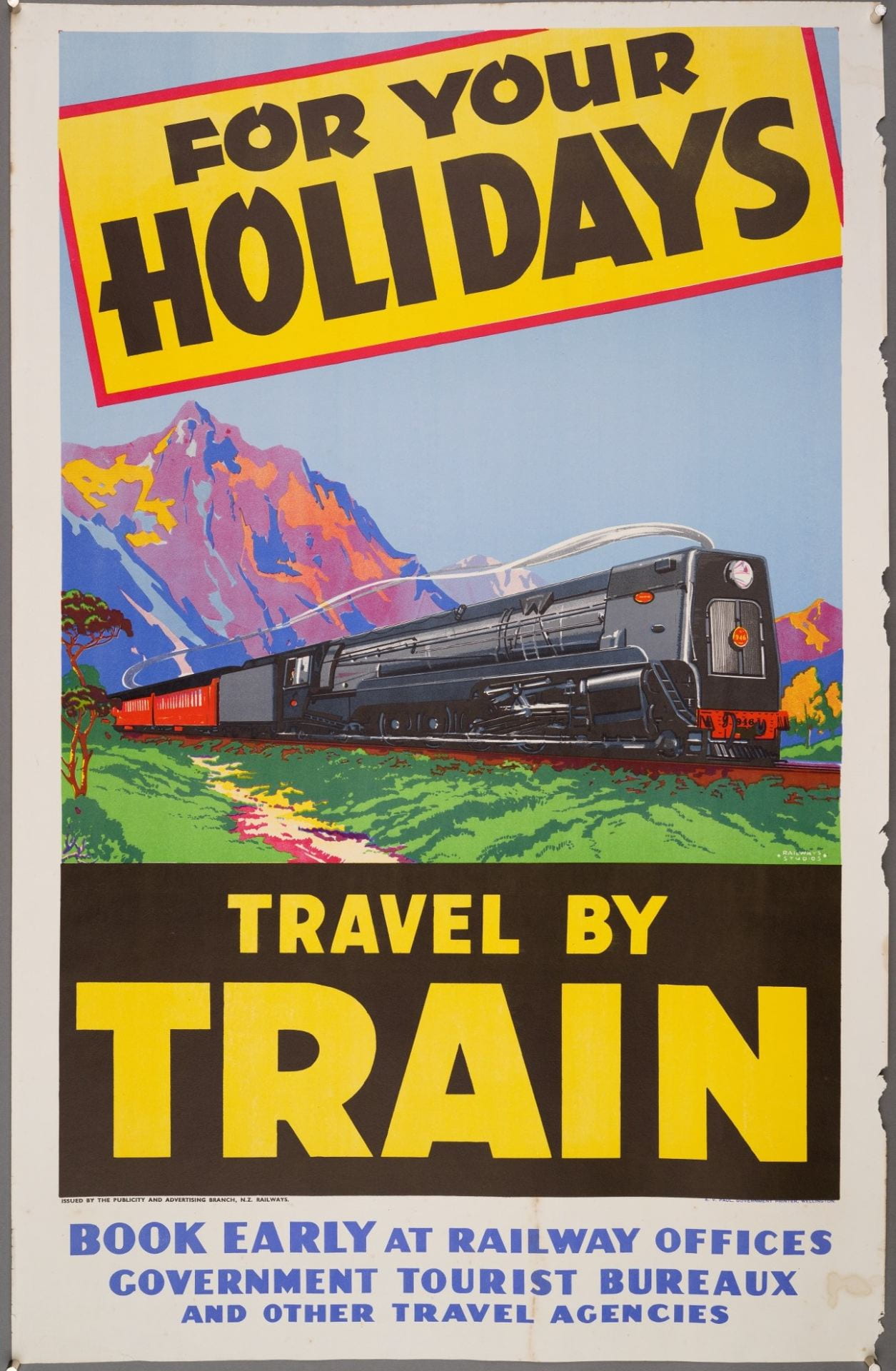
by Megan Hutching*
As you would expect, the Walsh Memorial Library has great strengths in the history of transport in New Zealand, but it also holds collections that will inspire the interest of other researchers.
The library’s holdings in the early history of aviation in New Zealand are good – there is archival, printed and pictorial material from and about George Bolt, Leo and Vivian Walsh, J.W.H. Scotland, Jean Batten, Horatio MacKay, and Hector and Seaforth McKenzie, along with early aero clubs and aviation companies, such as New Zealand Airways. Other companies which MOTAT holds records for are Union Airways of New Zealand, Mount Cook Airways and New Zealand Aerial Mapping.
Two areas which might not immediately occur to researchers, however, are the history of New Zealand design and New Zealand’s agricultural history.
The library has many examples of New Zealand Railways advertising posters as well as aviation ephemera, in particular those produced by TEAL (Tasman Empire Airways Ltd), NAC (National Airways Corporation) and Air New Zealand. The images and words used in this early publicity material illustrate the development of contemporary notions of branding and marketing. There is published material about industrial designers such as Gifford Jackson and Peter Haythornthwaite, as well as printed and unpublished examples of their work.
A complete run of New Zealand Farmer means that the history of agriculture in this country is documented in some detail. Using just this periodical, researchers can, for example, investigate changes in technology, farming practice, developments in stock and breeding, and the development of grassland pasture through aerial top dressing. The library also holds published material and photographic collections related to agriculture, such as those taken by Harry Vine.
Other areas of interest are transport unions’ periodicals (for example The Advocate from the New Zealand Railway Officers’ Institute), and the history of the book via the Association of Handcraft Printers (a collection which contains reference books, examples from various printing presses, the archives of the association, catalogues of typefaces, and rare books in first editions). The social history of sport is told through social clubs at organisations such as the Public Transport Garage, and the Auckland Transport Board (which ran Auckland’s trams and buses). Finally, urban history is covered in manuscript archives, periodicals, photographs, maps and plans which tell the story of how the development of public transport shaped the design of the city and the development of the city shaped the design of public transport.
For enquiries and to make an appointment for a visit:
T: +64 9 845 3690
MOTAT’s collections are now online (N.B. This is work in progress, so let us know if you spot any errors.)
* Megan Hutching is a freelance historian, specialising in oral history. Her research interests are women’s history and political activism. Megan works on commissioned projects as an oral historian, and works two days a week at the Museum of Transport & Technology (MOTAT) in Auckland, where she lives.
